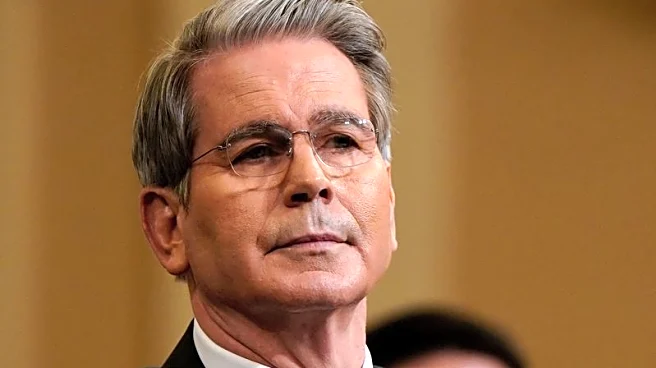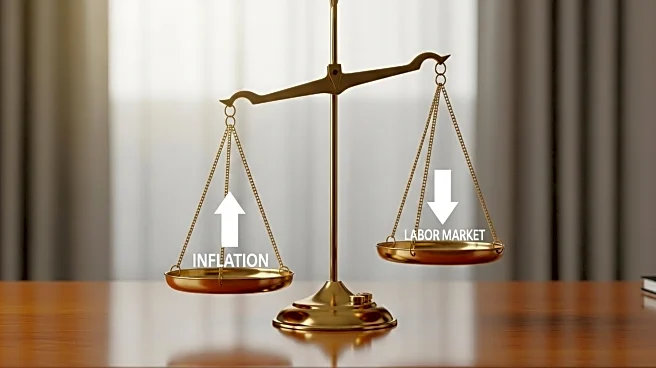What is the story about?
What's Happening?
The U.S. labor market is showing signs of strain, with August 2025's nonfarm payrolls report revealing only 22,000 jobs added, significantly below expectations. This marks the second consecutive month of weak job growth, with the unemployment rate rising to 4.3%. In response, the Federal Reserve is considering easing monetary policy to prevent a prolonged economic slowdown. Federal Reserve Chair Jerome Powell has indicated a shift towards a more accommodative policy stance, with market expectations for a rate cut at the upcoming September meeting. The Fed's focus is on balancing inflation control with the need to support employment.
Why It's Important?
The potential rate cuts by the Federal Reserve could have significant implications for various sectors of the U.S. economy. Lower interest rates typically benefit sectors sensitive to economic growth, such as healthcare and consumer discretionary, while potentially weakening the U.S. dollar. Investors are advised to adjust their portfolios accordingly, extending fixed-income duration and hedging against dollar weakness. The Fed's actions are crucial in navigating the current economic challenges, balancing the risks of inflation with the need to support a faltering labor market.
What's Next?
Investors and policymakers will closely monitor upcoming economic data, including the PCE price index and regional employment trends, to gauge the Fed's next moves. The September rate cut is anticipated, but the extent of the easing cycle remains uncertain. The Fed's decisions will be pivotal in shaping economic conditions, with potential impacts on inflation, employment, and financial markets.
AI Generated Content
Do you find this article useful?














